
Prošlost bi bila zanimljivija i povijesno relevantnija da je u njoj bilo više futurističke tehnologije.
Steampunk nije bio išao dovoljno daleko u prošlost.
http://vanolffen.blogspot.com/



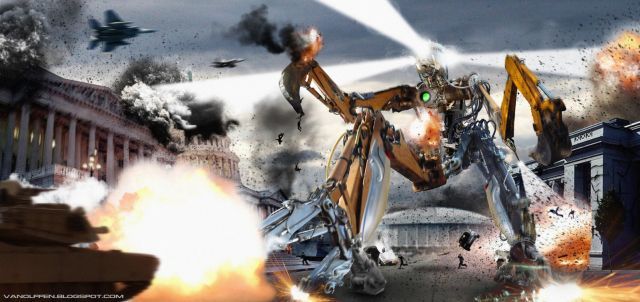

Bending Time: The Art of Sam Van Olffen
By
 "Lucifer" by Sam Van Olffen
"Lucifer" by Sam Van Olffen
It’s
a cool, calm summer evening in the rustic town of Montpellier, France.
The streets are quiet; the buildings still. Double-headed antiqued lamps
buzz with a soft, electric glow, gently reflecting off the subtle
Mediterranean mist.
The black and white voice of Jacques
Brel seeps and evaporates into the damp air, sounding from a workshop
raging with bizarre violence, tension, and the intoxicating smell of
paint.Building his own world out of mixed mediums on canvas, artist Sam Van Olffen blends the serene with the destructive. Crafting worlds that never existed, Van Olffen bends time, kissing the old with the new: gas masks on Victorian women, wild robots in prehistoric times. His work is an anachronism—a contrast—inherently dramatic and gripping.
“I began this style of art some ten years ago when, while adding bird’s wings in a painting to the bust of the Westminster countess, I made her into a fallen angel,” said Van Olffen. “I made her cry blood and skinned her chest- adding to her torture while increasing the impact of the image. Starting from there, I multiplied the sources; experimented, mixed the times... and the compositions have succeeded, slowly at first, but now regularly.” Realizing that he had found his niche, Van Olffen began working full time as an artist allowing his visions to come to life. “I'm only the person through whom the picture exists, not the creator. The finished composition is an independent entity, living alone, following its path. It doesn't belong to me anymore.”
Like a medium to a ghost, Sam Van Olffen channels his art. When possessed by an idea, he gives it an ink-stained pulse on canvas. Describing his experience developing his works, Van Olffen wrote: “Like a sculptor, I would say this: the sculpture already exists in the marble; the work is to set it free from the matter. At the beginning there is the idea, a concept prisoner of quantic magma. Once the theme, well installed in the picture, auto-creates its self, so to speak, turbulence zones vary from one image to another with quite different results. The form can change in the process, that's not important, but the idea doesn't change unless to deepen the subject, and what can arrive.” Beginning a work by grafting the “pertinent” features, embellishing it with details and then pruning it once more, Van Olffen doesn’t traditionally sketch his ideas, rather they evolve and grow. “If everything in a work depends on details, it's the sum of those details that gives a consistency to the ensemble. So yes, in that sense we can talk of sketches.” Once completed, Van Olffen distances himself from his work. “I don't even look at it anymore. I already think ahead to the next.”
Finding inspiration in two genres, Fantasy and Sci-Fi, the time-bending French artist is motivated to move on to the next piece. Van Olffen denies the need or want to convey any caveat or bias through his work. “I don't give any message—and certainly not war is bad. Yes, war is bad. It's the nature of war and I don't see why, or how, art would stop it,” he explains. “And how can it halt pollution, misery or famine? Everything is in the genes of humanity. If art can change anything, it would be known.” Giving the example of Picasso’s painting Guernica, a piece that showed suffering of civilians during the German bombing of the Basque city, Van Olffen told the story of an Aryan officer who had come across it. When seeing Picasso, the military man had asked him if it was his work. Picasso looked at him, answering, "No, it's yours." “That says it all,” Van Olffen continued. “Most often small, private things make history blow out: the murder of Archduke François Ferdinand by a Serbian nationalist, or, more recently, the immolation of a Tunisian grocer to protest against the carelessness of his country. That provoked the Arab country burst, not an artwork.” Acting as a mirror for the world, reflecting the actions of humanity, Van Olffen does not find need to use his art as a means of influence, rather as a host for honesty.

Van Olffen’s interest in history, politics, and current events heavily surfaces on the canvas, and, if not meant to transmit a message, certainly is telling about his passions and interests- though not his beliefs. “Politically speaking, my compositions don't reflect my thoughts. It's not because I make a picture on North Korea that I am a communist, or if I make a bio-mechanical Hitler that I am a national socialist, it is more a proof of complete freedom as an artist not to marry an ideological point of view.” This same view also carries over to his works involving religious scenarios and icons. Discussing this, Van Olffen articulates, “In terms of religious connotation, it's quite simple. Jean Clair, former curator of the museums of France, has a very precise thought about the subject: ‘we are past the culture of cult to the cult of culture.’ By culture in France, in our century, we must understand ephemeral art, street theater and other humbug subsidized by public money. At a time when everyone claims to be an artist, you can easily imagine the damage when everyone has their own masterpiece! That's why coming back to fundamentals like religious themes is, I think, a form of resistance in our century where all combines to make you even more stupid.”
Intelligent, insightful, and possessing a sharp memory, Van Olffen brims with the innovation of generations of artists, paying respect to virtuosos and historical figures of all breeds. Accrediting the 16th century Venetians architecture and the Flemish for their interpretation of light as influences for him, Van Olffen references them as personal inspirations. Conceptually speaking, he has savored and absorbed the writing of Céline and Léon Bloy, whom he says have changed his approach to reality.
Though respecting and being swayed by several past creators, Van Olffen puts his own spin into his work as well as envisioning how he would edit other traditional paintings. Referencing the Annunciation of Fra Angelico of the XVth Century, he points out that, in a highly stylized manner, the angel on the canvas is draped in renaissance clothing. “If I had to make an Annunciation,” he begins, “I would do it through the prism of our era coupled with the past centuries. I would depict Gabriel or Saint Michael as a modern angel, with a tattoo and a leather jacket, or an Armani suit.” Favoring “being figurative rather than lost in abstraction,” Van Olffen seems to have a passion for modernizing archaic images and concepts--breaking the confines of time, allowing centuries to fuse. His art is described as “Apocalyptic,” yet many of his images are riddled with the romantic.
Winding cables around a bizarre love scene, Van Olffen’s work Pygmalion exemplifies the delicate balance of which he is known for. At the top of the painting loose chords drape alongside sheer, pulled back curtains. A woman, standing nude, hidden behind smoke and mist, reaches out towards a bouquet of pale pink flowers. A man in a gas mask, half machine, half human, uses a tripod metal hand to present the roses to her, looking with a hopeful glance. Face tilted and beaming with love and fulfillment—motherly, even—the woman, with pulled back hair, looks like an illusion. Her feet are not seen. Perhaps she is “Galatea,” the creation of Pygmalion. Perhaps she’s a projected image, a composition of organized lights standing as an unattainable object of desire. Whatever it means, whatever the spectator understands it to be, there is one thing that is certain: this is a Van Olffen original, a romantic anachronism- a clock ticking counter-clockwise.
vanolffen.blogspot.com

















































































































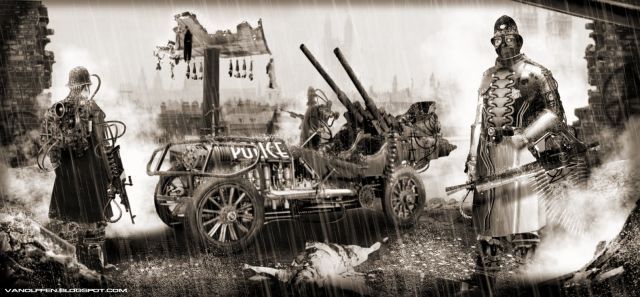

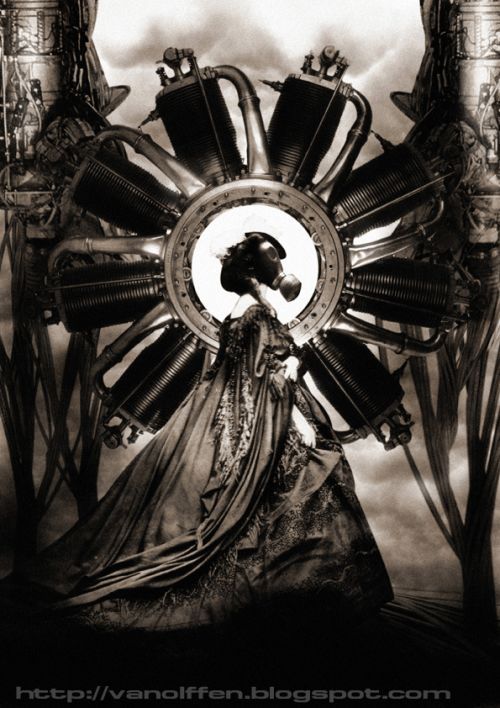

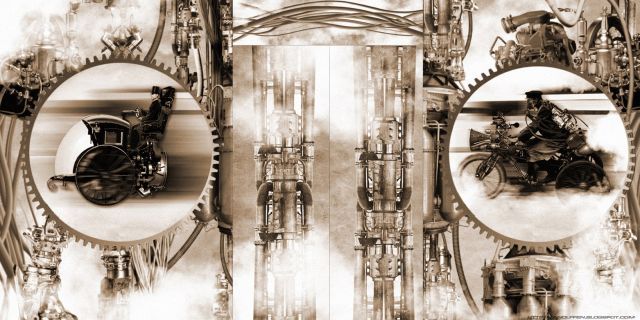
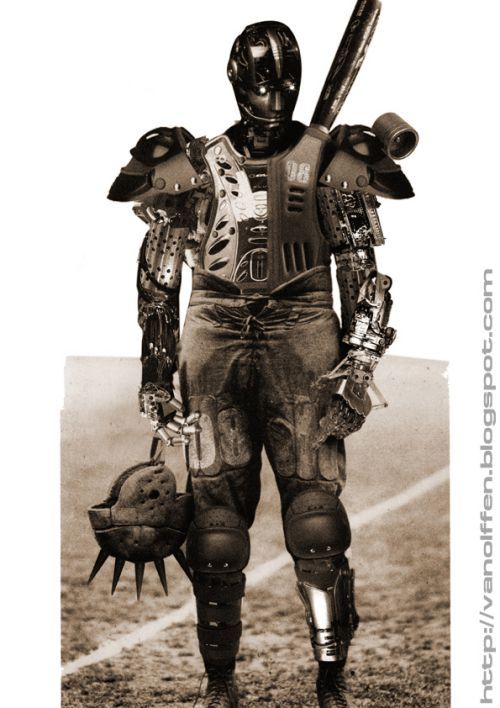
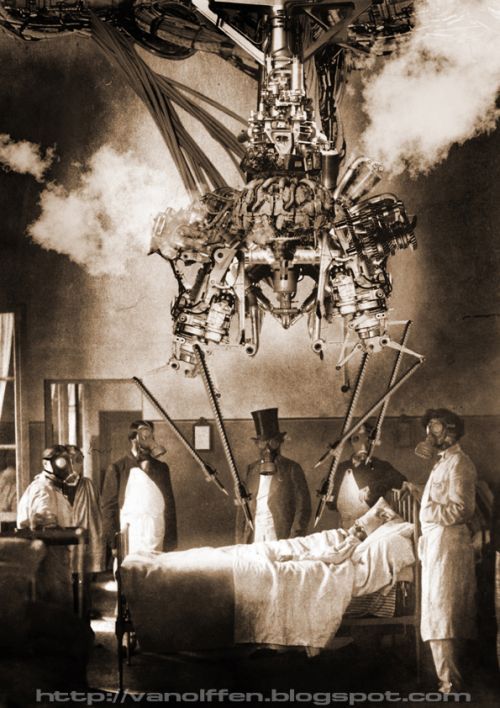
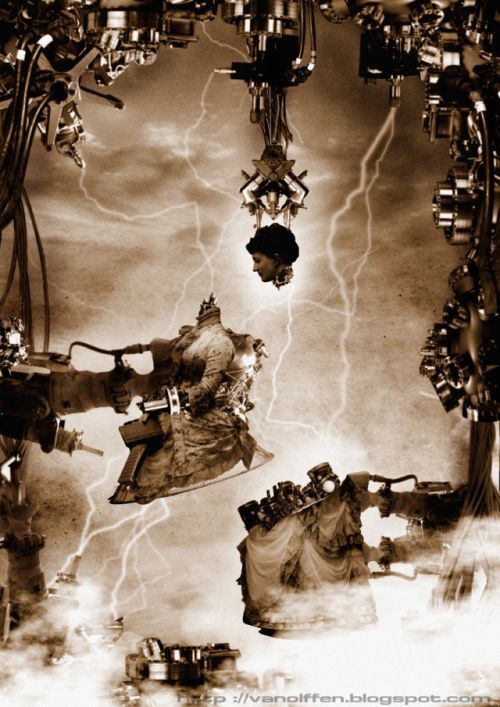
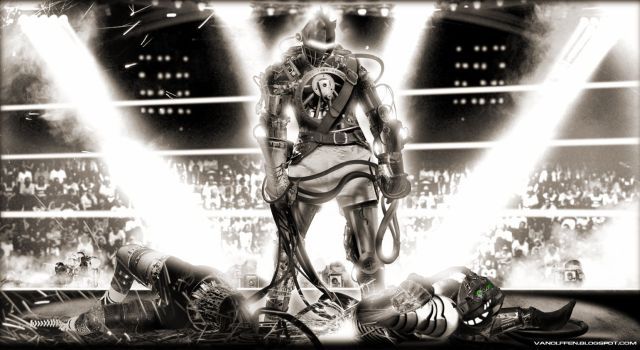
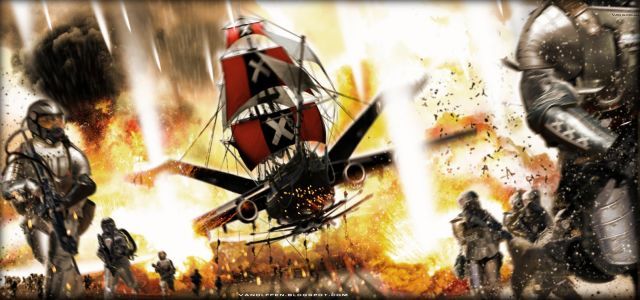
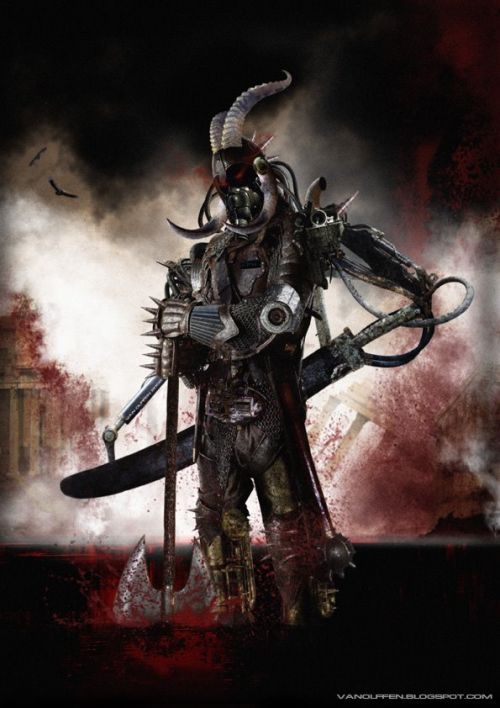
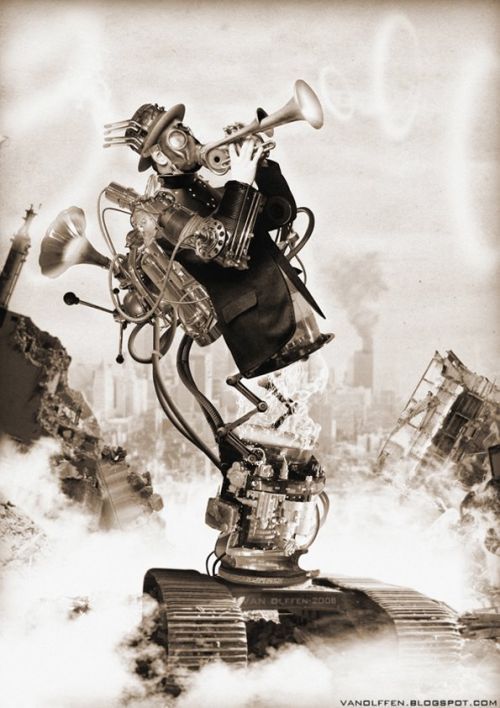

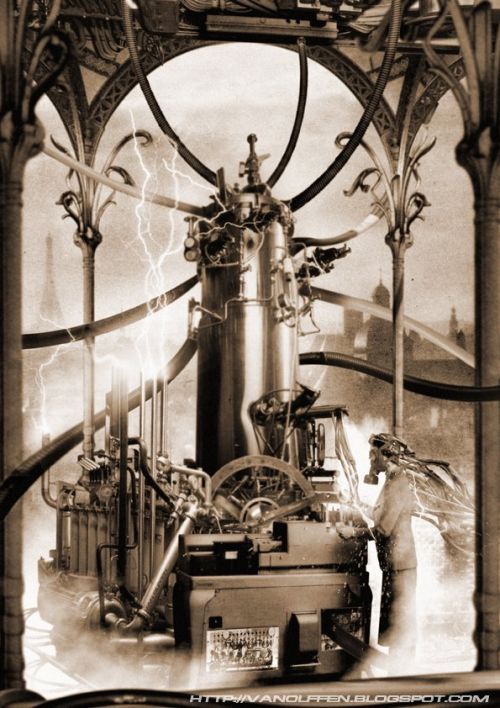
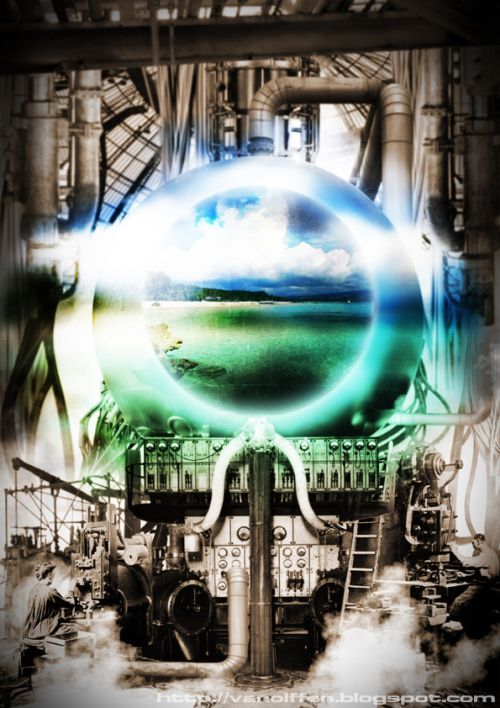
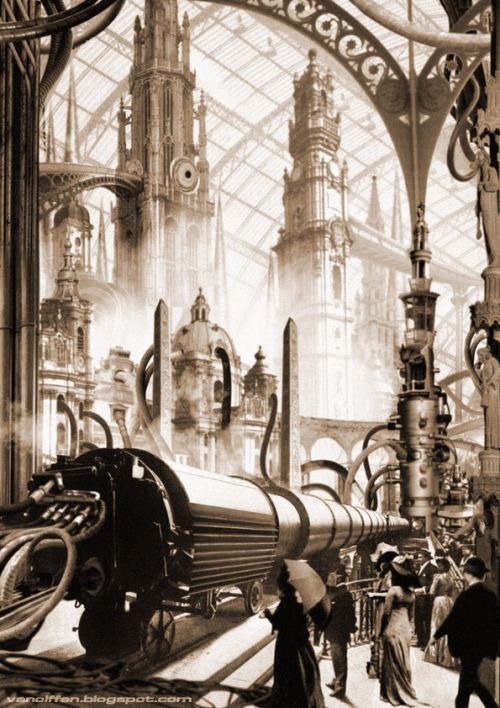
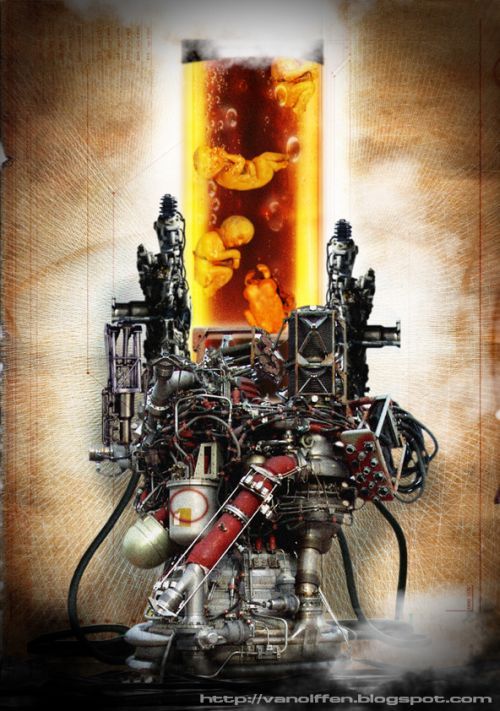


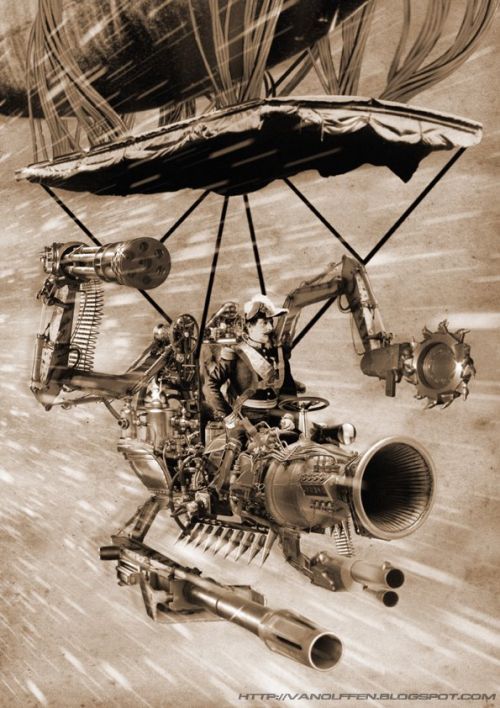

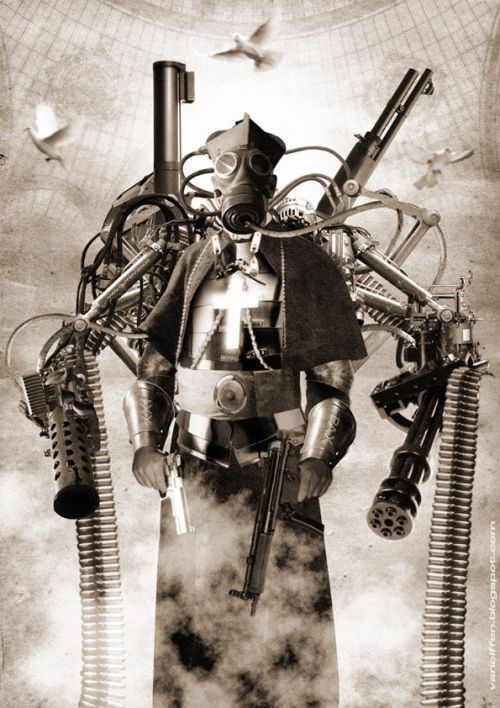
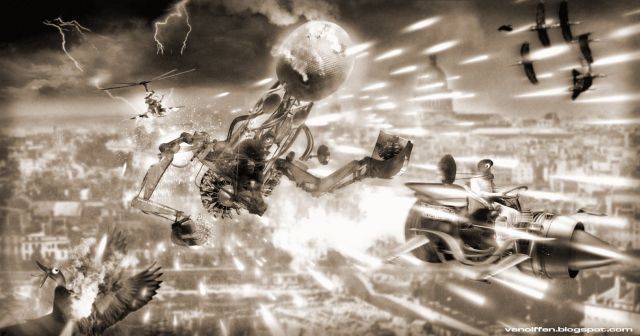

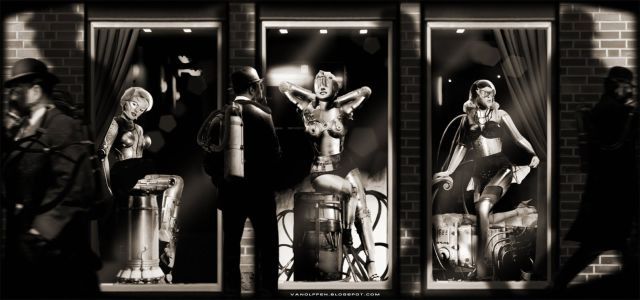
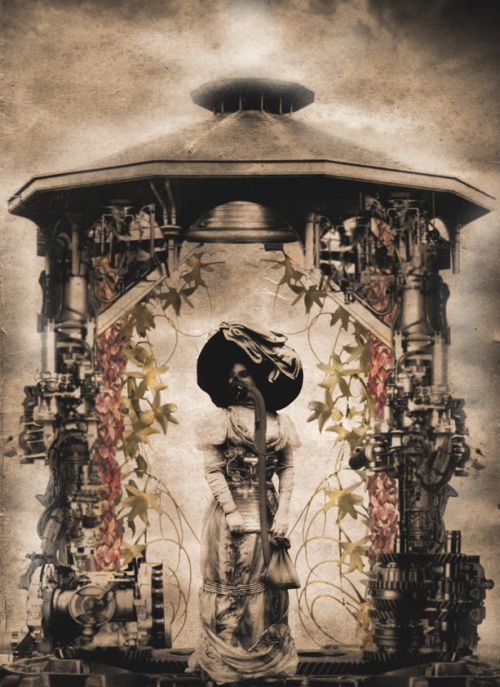
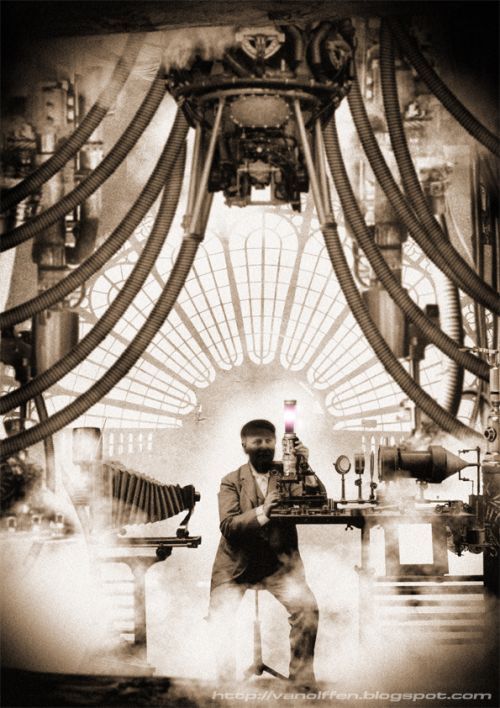
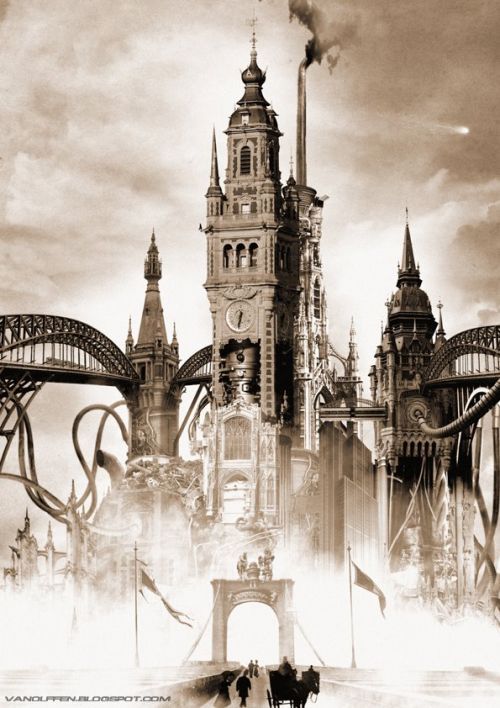
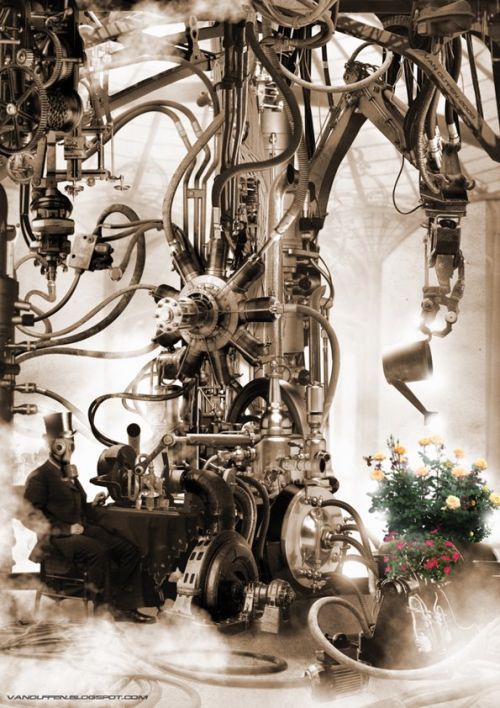
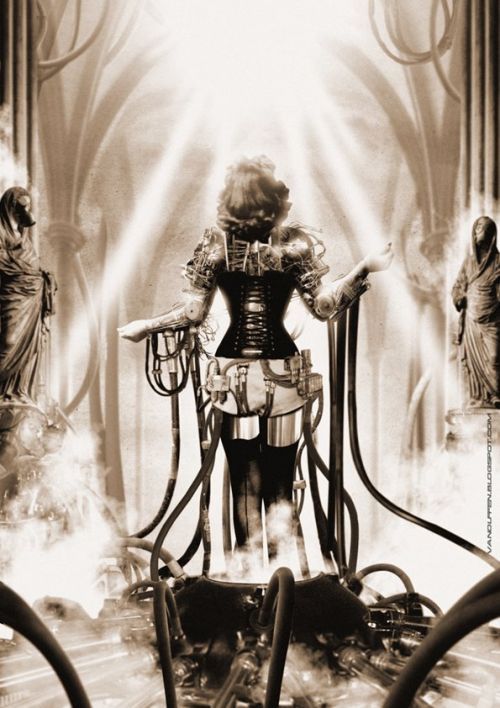
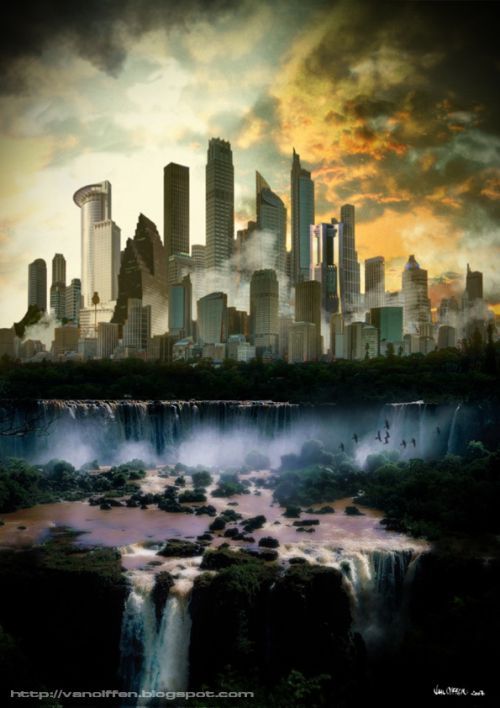
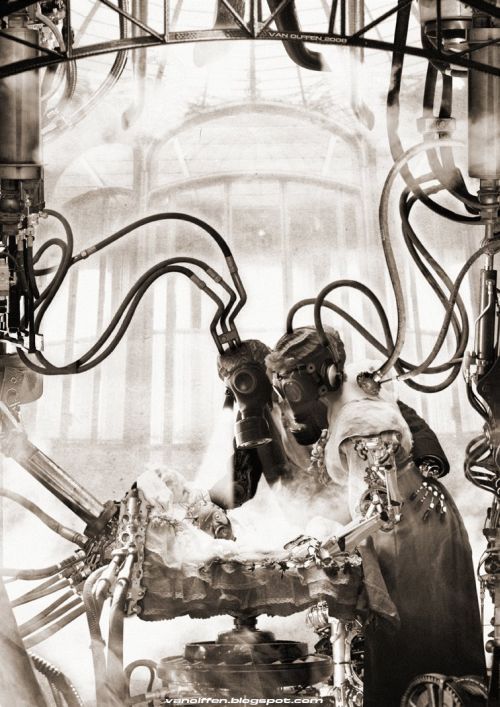
Nema komentara:
Objavi komentar